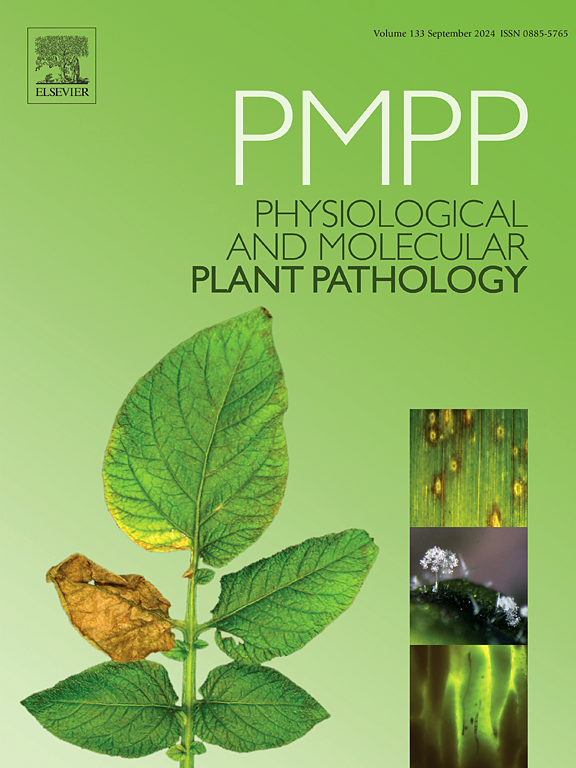Isothermal molecular detection of Alternaria alternata by RPA-LFD
IF 2.8
3区 农林科学
Q2 PLANT SCIENCES
引用次数: 0
Abstract
Alternaria species are the most important fungal pathogens with a wide range of host including apple, pear, potato, tobacco, strawberry and tomato. Tobacco brown spot disease (TBS) is a disease caused by A. alternata that mainly occurs in maturation period of tobacco, and often leads to enormous economic losses. For the rapid detection of A. alternata in tobacco, recombinase polymerase amplification-lateral flow dipstick (RPA-LFD) detection method was established in this work. Specific primers were designed based on the nucleotide sequence of the conidial pigment polyketide synthase gene ALM1. All investigated A. alternata isolates showed positive result using the specific primers, while other fungal species demonstrate negative result. The optimal temperature and reaction time were 39 °C for 10 min. Under this optimum conditions, the detection limitation of the RPA-LFD assay was 1 pg of genomic DNA of A. alternata. Furthermore, the practicality of RPA-LFD method was verified in vivo successfully by detection of A. alternata from infected leaves. In summary, we established a practical and reliable method for rapid diagnosis of TBS caused by A. alternata in tobacco in early stage of disease development.
求助全文
约1分钟内获得全文
求助全文
来源期刊
CiteScore
4.30
自引率
7.40%
发文量
130
审稿时长
38 days
期刊介绍:
Physiological and Molecular Plant Pathology provides an International forum for original research papers, reviews, and commentaries on all aspects of the molecular biology, biochemistry, physiology, histology and cytology, genetics and evolution of plant-microbe interactions.
Papers on all kinds of infective pathogen, including viruses, prokaryotes, fungi, and nematodes, as well as mutualistic organisms such as Rhizobium and mycorrhyzal fungi, are acceptable as long as they have a bearing on the interaction between pathogen and plant.

 求助内容:
求助内容: 应助结果提醒方式:
应助结果提醒方式:


